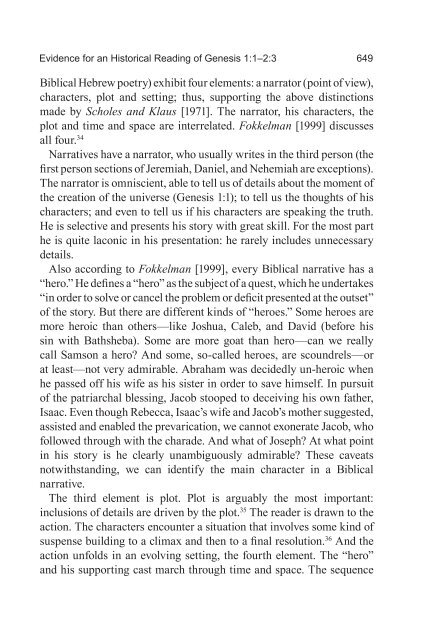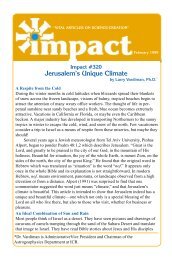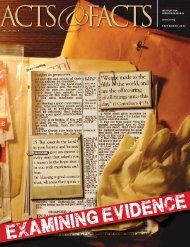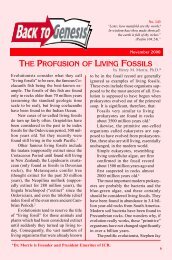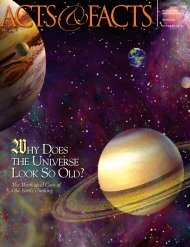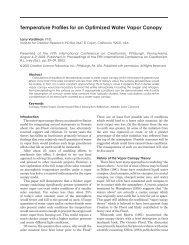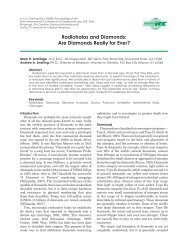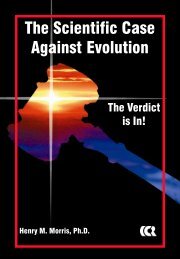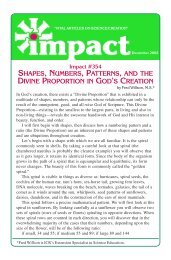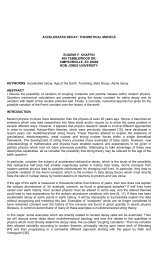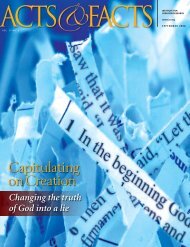Statistical Determination of Genre in Biblical Hebrew - Institute for ...
Statistical Determination of Genre in Biblical Hebrew - Institute for ...
Statistical Determination of Genre in Biblical Hebrew - Institute for ...
You also want an ePaper? Increase the reach of your titles
YUMPU automatically turns print PDFs into web optimized ePapers that Google loves.
Evidence <strong>for</strong> an Historical Read<strong>in</strong>g <strong>of</strong> Genesis 1:1–2:3 649<strong>Biblical</strong> <strong>Hebrew</strong> poetry) exhibit four elements: a narrator (po<strong>in</strong>t <strong>of</strong> view),characters, plot and sett<strong>in</strong>g; thus, support<strong>in</strong>g the above dist<strong>in</strong>ctionsmade by Scholes and Klaus [1971]. The narrator, his characters, theplot and time and space are <strong>in</strong>terrelated. Fokkelman [1999] discussesall four. 34Narratives have a narrator, who usually writes <strong>in</strong> the third person (thefirst person sections <strong>of</strong> Jeremiah, Daniel, and Nehemiah are exceptions).The narrator is omniscient, able to tell us <strong>of</strong> details about the moment <strong>of</strong>the creation <strong>of</strong> the universe (Genesis 1:1); to tell us the thoughts <strong>of</strong> hischaracters; and even to tell us if his characters are speak<strong>in</strong>g the truth.He is selective and presents his story with great skill. For the most parthe is quite laconic <strong>in</strong> his presentation: he rarely <strong>in</strong>cludes unnecessarydetails.Also accord<strong>in</strong>g to Fokkelman [1999], every <strong>Biblical</strong> narrative has a“hero.” He def<strong>in</strong>es a “hero” as the subject <strong>of</strong> a quest, which he undertakes“<strong>in</strong> order to solve or cancel the problem or deficit presented at the outset”<strong>of</strong> the story. But there are different k<strong>in</strong>ds <strong>of</strong> “heroes.” Some heroes aremore heroic than others—like Joshua, Caleb, and David (be<strong>for</strong>e hiss<strong>in</strong> with Bathsheba). Some are more goat than hero—can we reallycall Samson a hero? And some, so-called heroes, are scoundrels—orat least—not very admirable. Abraham was decidedly un-heroic whenhe passed <strong>of</strong>f his wife as his sister <strong>in</strong> order to save himself. In pursuit<strong>of</strong> the patriarchal bless<strong>in</strong>g, Jacob stooped to deceiv<strong>in</strong>g his own father,Isaac. Even though Rebecca, Isaac’s wife and Jacob’s mother suggested,assisted and enabled the prevarication, we cannot exonerate Jacob, wh<strong>of</strong>ollowed through with the charade. And what <strong>of</strong> Joseph? At what po<strong>in</strong>t<strong>in</strong> his story is he clearly unambiguously admirable? These caveatsnotwithstand<strong>in</strong>g, we can identify the ma<strong>in</strong> character <strong>in</strong> a <strong>Biblical</strong>narrative.The third element is plot. Plot is arguably the most important:<strong>in</strong>clusions <strong>of</strong> details are driven by the plot. 35 The reader is drawn to theaction. The characters encounter a situation that <strong>in</strong>volves some k<strong>in</strong>d <strong>of</strong>suspense build<strong>in</strong>g to a climax and then to a f<strong>in</strong>al resolution. 36 And theaction unfolds <strong>in</strong> an evolv<strong>in</strong>g sett<strong>in</strong>g, the fourth element. The “hero”and his support<strong>in</strong>g cast march through time and space. The sequence


